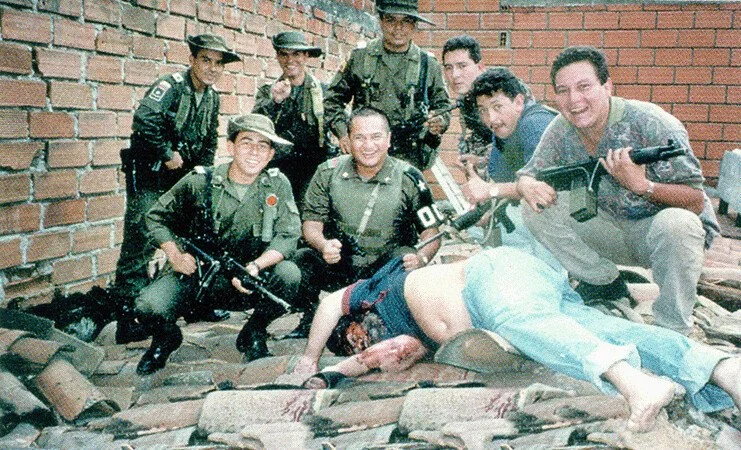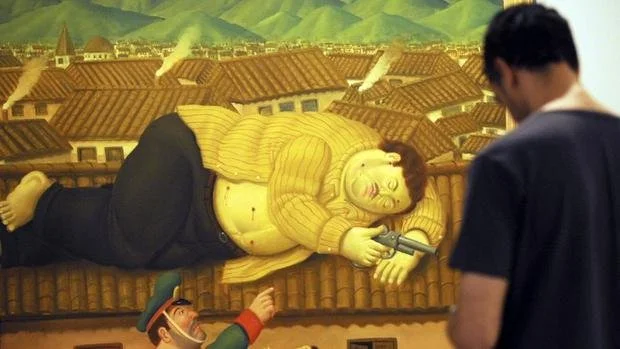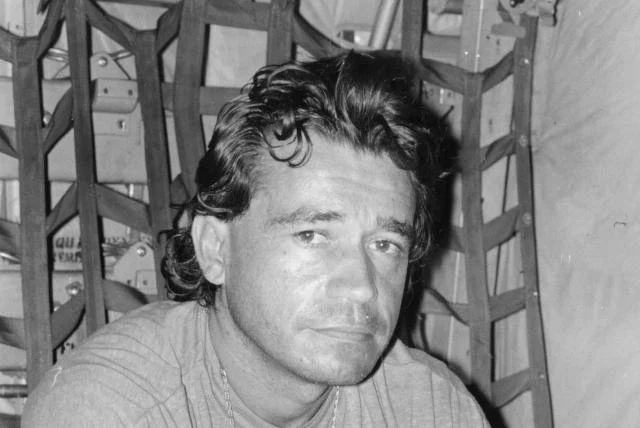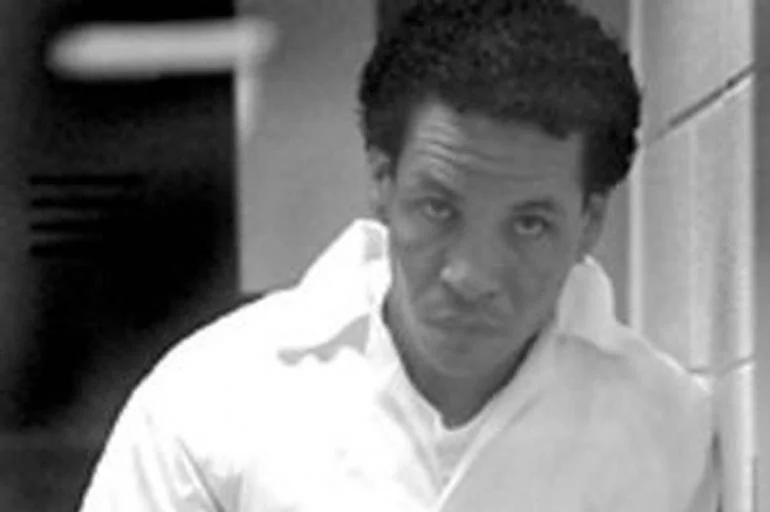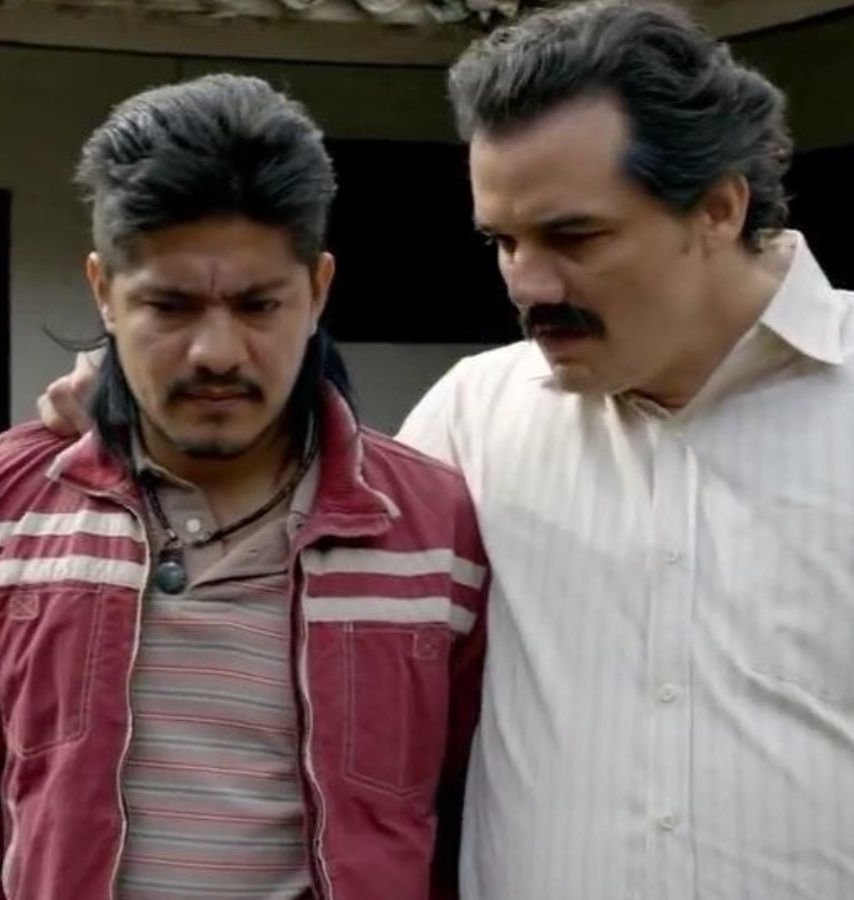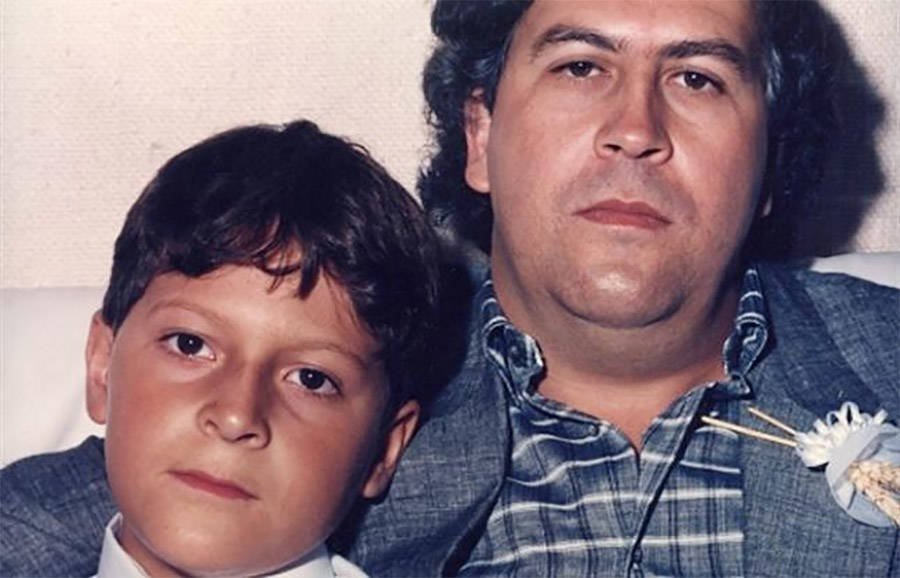My experience meeting Pablo Escobar's Brother
| TABLE OF CONTENTS
Medellin today and how it used to be
In December 2021, I was travelling in Colombia for 1 month. The place I preferred the most was Medellin — a vibrant city full of life, where today, you can breathe peace and meet friendly local people. But, Medellin was not always like that. Just 30 years ago, it was considered the most dangerous place in the world — with 6,000 homicides per year. The Colombian government was going through a war against narcotraffic, and the well-known drug lord Pablo Escobar.
The city of Medellin now hosts skyscrapers and highrise apartments. The economy has equalised, opening up to culture and art, and lowering gang activity. The torment that the Medellin Cartel put the city through pushed it to become bigger, better and faster than before.
After visiting Medellin, what fascinated me the most, was seeing how this country has changed, transforming into a "hipstery " place, full of art and colours — becoming a digital nomad destination. The barrio "Comuna 13", used to be run by violent drug trafficking organisations. Shootings and murders were the order of the day, and police officers were not even allowed to enter in the neighbourhood.
This is how it looks today..
Comuna 13
When you are in Medellin, you feel genuinely proud and happy for the locals, that went through so much, and today they are finally able to live in peace and with no fear. People want to close this painful chapter of the past. But, at the same time, they are aware of the tourist’s curiosity, and fascination for a character like Pablo Escobar. That’s why, they are happy to tell their side of the story and explain how life - in the 90s - really was in Medellin. Locals care about educating foreigners and making them understand that reality is not always as exciting as we see in American fiction.
Today, Colombians want to remove the "narco-country" reputation. After visiting it, I can say that they've accomplished it — I couldn't have felt more welcomed and safe in this country.
Medellin has changed positively so much — you can feel it from the kindness and appreciation of the people you meet. They are happy to be free and finally live in a very joyful and safe environment.
Along the streets of Comuna 13, a colourful barrio in Medellin
Pablo Escobar..a hero, or a murderer?
Before coming to Medellin, I was confused about how Pablo Escobar was perceived by the public eye. Was he considered a hero or a murderer?
After visiting Colombia, I definitely got an answer. Most of the people I talked to, gave me a pretty clear idea — death and fear were their childhood memories, and the positive actions that Pablo did, were nothing compared to the madness that he caused in the country. Speaking with the locals was enriching, but I also wanted to hear the other side of the story. After some research, I found a tour with Roberto Escobar — Pablo's brother.
Today, Roberto lives in one of Pablo Escobar’s former mansions, which has turned into a shrine to Escobar’s infamous lifestyle. You can make a tour directly with Roberto, or other local guides. This house tour is legal since 2016, after many battles with public opinion, and to get the Colombian government’s approval. Some politicians, wanted to shut it down, for fear that it would idolise violence.
Roberto´s house
Who is Roberto Escobar?
Roberto Escobar Gaviria — nicknamed El Osito (Little Bear), today 75 years old — is the brother of deceased drug lord Pablo Escobar. He was the former accountant and co-founder of the Medellín Cartel, which was responsible for 80 per cent of the cocaine smuggled into the United States.
Roberto Escobar was imprisoned, for his part in the operations of the Medellín Cartel. He escaped with his brother in July 1992, but he surrendered to authorities one year later. In 1993, while still in prison, he was blinded in one eye by a letter bomb. After 10 years in prison, he was released in 2006.
In 2016, he sent a letter to Netflix regarding the Narcos TV series, demanding $1 billion in payment for unauthorised usage of content. On Netflix he was represented as the character Gustavo de Jesús — Pablo’s cousin — to protect his name, since he played such an important in the cartel, and he is one of the few that is still alive.
In 2019, Roberto launched a phone Escobar Fold, priced for $349, claiming that he will defeat Apple. He also launched Escobar Fold 2, which is reportedly a Galaxy Fold with poorly-added Escobar branding. Many customers, when ordering the phones, said that they never received them, and claimed that tech influencers were the only one to actually getting the products.
Roberto with the phone Escobar Fold 1
Definitely an interesting character, that even today, doesn't stop to surprise (for bad and good). His obsession to achieve something big, never seems to let him go.
The day I met Roberto
I'm not gonna lie, the day I met Roberto, I woke up with mixed feelings. I was nervous and excited to meet such a known character — Yes, a mad drug lord, but also a brilliant businessman. At the same time, I felt guilty for being interested in such a controversial person. I decided to do the tour anyway, because I was curious to hear both sides of the story.
The first thing I had to do, was to order a taxi, to reach his house. Sounds easy, but I felt paranoid the entire time, so I put a different address nearby, to avoid shame or questions from the taxi driver. (However, I think the taxi driver understood where I was going).
Roberto Escobar lives in a very quiet and green area of Medellin, and looking at the houses around, seems that he is doing financially pretty good. (Must be the buried money of the cartel XD).
The place is located on a hillside, with views of the airport from the terrace, so that Pablo could see his shipments of cash arriving by plane from the US.
A young local guide from Medellin welcomed me at the entrance. He spoke fluent English, and not a coincidence, he was also the grandson of a drug smuggler that used to work for Pablo — exporting tons of drugs with his truck, from Colombia to Miami.
When I met Roberto, he was sitting on a chair in his garden, enjoying the sunny weather of Medellin. He introduced himself and kindly welcomed me saying - that I could feel at home. Next to him, there was also Claudia Escárraga, his ex-wife, also known for being a beauty queen.
Roberto met Claudia in the prison — La Catedral, that Pablo ordered to build for himself and the Medellin cartel. The prison became famous for fooling the Colombian government. Built in 1991, Pablo had an agreement with the Colombian authorities, in which he would surrender and serve a maximum term of five full years, without being extradited to the United States.
The luxurious prison was famous for the expensive facilities, the wildest parties, and also for welcoming models, beauty pageants and prostitutes.
The Escobar's house tour
The tour started showing the memories that Roberto keeps in his house — from the luxurious cars that he doesn’t want to sell for a memorial value, to the bullet holes in the walls, when someone tried to kidnap him after he got released from prison in 2006. What fewer people know, is that Robertos was once a top cyclist in Colombia who dreamed of racing the Tour de France before joining his brother in a life of crime. Roberto opened a bike shop and helped fund a cycling team, Bicicletas Ositto, which he managed. As Pablo’s crimes were becoming more violent and rumour that the team was supported with drug money, Colombian cycling officials eventually wanted nothing to do with him.
Escobar's life was characterised by fear, threat and escape. Roberto, also spoke about being always paranoid during that time, and he showed me the safe rooms in the house, that were equipped with oxygen tanks, to hide for long periods if needed. I even tried out the safe room, behind his living room fireplace.
Roberto told stories about meeting with politicians, world leaders and famous entertainers. He spoke about spending time with Frank Sinatra, Fidel Castro, and a 3 AM visit with Madonna.
Personal interview with Roberto Escobar
At the end of the tour, Roberto was open answering some questions.
Do you miss your brother?
"I miss him a lot, but I also miss all my other family members, like my brother in law, my cousin, my father in law and my son."
Would you have done something different from your past?
"People make mistakes, but you cannot change the past. Just learn from your experiences."
After I asked this question, I noticed that Roberto got defensive and felt very uncomfortable, which was not my intention. I was just curious to know if he had any regrets or things he would have done differently in his life.
Are you in danger, today, to live in Medellin?
"I felt in danger after I got released from prison, in 2006, when they tried to kidnap me in my house. Today, I feel very safe. Very often, I go to speak with children in libraries, in the city centre of Medellin."
Do you believe that Pablo got killed?
"I know he didn’t get killed, but he killed himself, with a bullet on his head. When things were going too bad for Pablo, he understood that he couldn’t escape forever, so he decided rather have a grave in Colombia than jail in the States."
Are you still in contact with Pablo’s son?
"Not that much anymore. He used to come to visit, but it has been a long time."
The truth behind Pablo’s death
There are several theories and attributions that have been made about the death of one of the most famous drug traffickers in history, and some of them collide with the "official version" told by the Colombian officers and by the American authorities.
THE "OFFICIAL STORY"
The most widespread version of Escobar's death, recounted in dozens of books, television series and movies, is that he was killed by the police commander Hugo Aguilar along with other members of the Colombian security forces and the DEA agents. Escobar made the fatal mistake of calling a radio talk show to argue with its host, and the CIA and its Colombian partners traced the call. Escobar was killed as he fled over apartment rooftops. However, this official version is very well discussed in Colombia, and many people believe it not to be true.
"LOS PEPES" ENEMIES
"Los Pepes" — was an alliance between paramilitaries and drug traffickers enemies of the Medellín Cartel. They took credit for the decline of Pablo and his death.
The crucial role of "Los Pepes" was to weaken the cartel. One of the leaders of the Pepes — Diego Murillo, a paramilitary and drug trafficker known as "Don Berna", assured that the bullet that killed Escobar was fired by his brother, and he also write a book about it: "This is how we kill El Patron" — where he recounts his version of the drug lord's last hours and assures that he witnessed his death.
The paramilitary, who in 2008 was extradited to the United States for drug trafficking, assured that his organisation maintained contacts with the police throughout the search for Escobar. This version is also the one that I heard the most, after speaking with locals in Medellin.
One of the leader members Diego Murillo also called "Don Berna"
SUICIDE
Colombian artist Fernando Botero made two paintings about Escobar's death scene
One of Escobar's best-known phrases is — "I prefer a grave in Colombia than a jail in the United States." It was with this slogan that the narco waged a bloody war against the Colombian State and that turned Medellín into the world capital of homicides in the 1980s.
His famous motto also served to support the hypothesis that the trafficker committed suicide on the roof where he was trying to flee when he saw that he had no escape. The theory that Pablo Escobar shot himself in the head is supported by the narco's relatives, such as his nephew Nicolás Escobar and by his brother Roberto Escobar. Nicolas was present during the exhumation of his uncle's remains and he saw the perforated skull. Also Pablo's son — Sebastián Marroquín, assured that it was suicide:
"My father always told us that the telephone was synonymous with death because they could easily trace us. The day he died he called us 12 times. So I´m sure that he wanted the police to arrive and die in combat. It is a way too, to commit suicide."
Pablo died the 2nd of December 1993, one day after his 44th birthday. The funeral was celebrated the 3rd of December in the city of Medellin.
The funeral and burial of the former head of the Medellín Cartel were accompanied by hundreds of people in Medellín — the city where he became powerful, where he fought the Colombian State, and where he spent his last months hiding.
Where are Pablo’s members today?
This picture is an original piece that Roberto keeps outside in his garden walls. It shows the most wanted mens in Colombia in the 90´s. For Pablo and Roberto, it was considered a joke because of the "little"amount of money that they offered
What I noticed after doing some research, is that today is easier to find information about the drug leaders, than the sicarios. Many sicarios, after they got released from jail, they got murdered by enemies gangs, or they changed their name, starting a new life in a different country.
Below, you find a list of people that worked for Pablo Escobar. Roberto’s guide told me that today Roberto is still in contact with some of them. He mentioned just one of the Ochoa brothers.
Jorge Luis Ochoa Vasquez
He was born in 1950 in Medellín, and he became one of the main leaders of the Medellín Cartel with his brothers Juan David and Fabio. He was imprisoned a total of three times, the first time in Spain and the next two in Colombia. In 1991, he surrendered to the authorities, and after a process of negotiation, he managed not to get extradited to the United States. A criminal court sentenced him to jail for a period of 8 years which was reduced substantially to 5 months. He was released in 1996 and he is currently free, owes nothing to justice, and he is one of the few members that is still alive.
Today he lives in Medellin and he is in contact with Roberto.
Fabio Ochoa Vasquez
Unlike his brother Jorge, he was arrested and extradited to the US in 1999 and he is serving a 30-year term in the US federal prison. From 1987 to 1992, his brothers and him were included in the Forbes Magazine list — global billionaires, and he was considered the "chief executive" of the family business. The attorney for Fabio Ochoa Vasquez, today 64, wants a federal judge to cut his 30-year prison sentence by about five years. - "He wants to go back to Colombia. That’s where his family is."
The Ochoa brothers in Narcos, Netflix
Carlos Lehder Rivas
Today he is 72 years old
Carlos Lehder — is the man who co-founded the notorious Colombian Medellín drug cartel. In 1998, at his trial, prosecutors alleged that he was responsible for shipping 80% of the cocaine into the US. He was captured on a ranch early on February 4, 1987. Eleven hours later, he was headed to Miami, being the first victim of extradition. He was supposed to stay in jail for 130 years, however, his sentence was reduced, after he cooperated with an investigation into Panamanian Manuel Noriega. He was placed in a witness protection prison in Florida.
Carlos Lehder in total spent more than 33 years in jail. He has both — German and Colombian citizenship. In 2020, after he got released from jail, he was escorted to Germany by two US officials on a regular passenger flight from New York to Frankfurt, and he was handed over to German authorities. Lehder was given German citizenship through his father, an immigrant to Colombia. He has never been to Germany before, and he will face no legal action from the county’s authorities. Lehder has no interest in returning to Colombia and German authorities provided assistance in allowing him to resettle in Berlin. In Germany, he also met his daughter after 17 years without seeing her.
His representation on Netflix. In the series he was killed in a shoot-out with police in Medellín in 1993 — as he attempted to avoid extradition to the US.
Dandenis Muñoz Mosquera - "La Quica"
He was described as the "chief assassin" of the Cartel's leader. US authorities currently link him to the deaths of more than 220 people, having supposedly murdered members of his own organisation —the Medellín Cartel, and the rival — Cali Cartel. Colombian authorities connect him to the deaths of more than 40 police officers.
Today, La Quica sits in the U.S. Penitentiary convicted with 10 life sentences, charged with over 200 murders, including the bombing of Avianca Flight 203, and the bombing of the Department of Administrative Security building in Colombia. He still sustains, that he was not involved in any of the attacks.
La Quica in Narcos
Luis Carlos Aguilar Gallego - "El Mugre"
He is another of the hit men of Pablo Escobar, who survived the mafia war of the 80s and 90s. In 1993, he submitted to justice, where he purged 8 years in jail. While he was leaving the security jail in Colombia, he got shot, after that, he literally vanished. He was spotted in 2017 close to Alicante, with another identity. He was no longer a criminal, but a pastor of a church in Murcia. People also reported his presence in the Colombian municipality of La Estrella, in Antioquia.
Carlos Mario Alzate Urquijo - "El Arete"
Another of Escobar’s hitmen who is still alive — is Carlos Mario Alzate Urquijo, also called "El Arete" — who is now 57 years old, and has more than 300 dead behind him. After undergoing justice in 1993, he spent eight years in jail, and in 2001 after being released, he was leaving his detention centre, and he was attacked by gunmen who wounded him with two shots in the neck. After the attack, the authorities were obliged to provide protection and anonymity.
Colombian authorities suspect that he has changed his identity and that he could be hidden in Spain, more specifically in Barcelona.
Alvaro de Jesus Agudelo - "Limon"
"Limon" — was Pablo's chauffeur and bodyguard from 1992 to 1993. He was Escobar's last ally, and he died alongside his boss in the Los Olivos raid — on the 2nd of December 1993, after over a year of faithful service to the Medellín Cartel.
Limon´s and Pablo´s final words in Narcos, Netflix
Jhon Jairo Velazquez Vasquez - "Popeye"
"Popeye" — used to be one of Pablo's sicarios, and the only one that became a celebrity after Pablo's death. He surrendered to the Colombian justice system in 1992. He served 23 years in prison for terrorism, drug trafficking and murder. They gave him the nickname "Popeye" because of his physical resemblance to the character, which would later be removed by plastic surgery.
In 2014, he got released from jail on early parole, and in 2018 he returned to prison on extortion charges. In 2020, he died for stomach cancer, while he was still in prison.
Popeye has openly admitted, to have killed over 300 people, and being involved in the murders of 3,000. After the first time in prison, Popeye became a youtuber and social media star with hundreds of thousands of followers. On social media he was named — ‘Popeye the Repentant’.
For most of the people in Colombia, his celebrity was a slap in the face — “he was a coldblooded assassin who expressed little remorse” .
Roberto Escobar denied that Popeye was Pablo’s right-hand man. — “This is the biggest lie ever” -Roberto and the guide said personally to me. He also affirmed that "Popeye" was more a funny entertainer that kept the atmosphere cheerful and relaxed during stressful situations.
In Narcos he was represented with the name "Poison"
Reflections
I don’t know exactly why people are fascinated by the Escobar name. Maybe, because of how these characters are portrayed in the fiction — charismatic and ambitious businessmen. Maybe, people just have a weird attraction to evil. I can’t explain.
Personally, I’m interested because of how controversial Pablo Escobar was as a character. He started with good intentions — he wanted to become the Robin Hood of Colombia, giving to the poor and people in need — redemption from the past, to compensate for how he grew up in poverty.
In the end, he clearly went crazy, losing contact with reality — a megalomaniac person, that couldn't accept no as an answer.
I wonder what would have happened if he didn't use violence to obtain what he wanted, and what would he have done if he would have become president of Colombia. Instead of a terrorist, a real hero? Who knows..
Would I recommend this experience?
What is important for me to say, is that this tour didn’t in any way try to dictate an opinion, or force you to take Escobar’s side. The tour shows the family’s memories and narrates their past experiences.
People that want to visit Roberto’s house, need to be open-minded, which is understandable why for some might be hard. It’s undeniable the pain that has been inflicted in Colombia during the 80s and 90s, and it’s still a very sensitive subject.
However, It is good to remember that Colombia laid on a corrupted political system, and some events might have been manipulated and filtrated by institutions. Innocent lives were taken away not just by the sicarios, but also by the police. They killed and tortured many young people involved in the cartel. Of course, we will never hear that side of the story.
This tour was a very unique experience, different from any other Pablo Escobar tour. I recommend it if you want an authentic testimony from the past. When I met Roberto, he was humble, friendly, and easy to talk with. It can be intimidating at first, but you can ask him any question.
It’s good to listen to both sides of the story and create your own opinion at the end. We should not forget the past, in order to learn from mistakes, and remember the victims that Colombia has left behind.
The Best Book about Pablo Escobar’s Life
I read many books about Pablo’s life, and my favourite is written by his son Sebastián Marroquín, who has left Colombia, changed his identity and tried to live a "normal" life in Argentina. The son narrates his teenage memories, and how was it to be the son of the most wanted man in the world. A story told from the intimacy of his home and not from the outside.
"This is not the story of a child seeking redemption for his father, but a shocking look at the consequences of violence and the overwhelming need for peace and forgiveness." — Sebastián Marroquín














